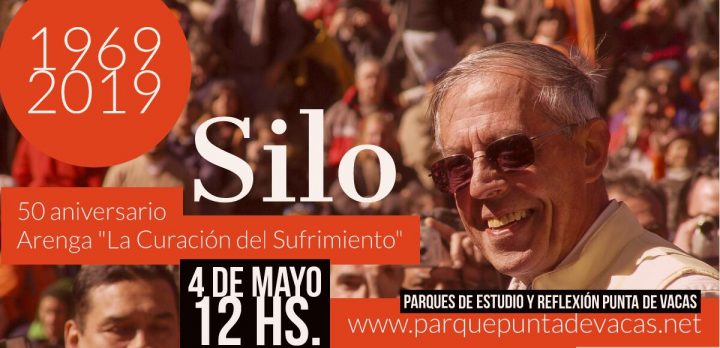A historic milestone will be celebrated next Saturday, May 4 at the Punta de Vacas Study and Reflection Park (1), in the Andes Mountains: the 50th anniversary of Silo’s first public address, known as “The Healing of Suffering”, which would later resonate in numerous cultures and countries on five continents.
For this reason, pilgrims from Italy, France, Spain, Peru, the United States, Switzerland, Greece, the Czech Republic, Portugal, Brazil, Chile, Argentina, Hungary, among many other places, are already arriving at Punta de Vacas Park, where the Siloists carry out their social, cultural and spiritual activities.
The celebration of the 50th anniversary is open, starting next Saturday May 4 at 12 noon in the Plaza de las Estelas of Punta de Vacas Park, with a welcome in Spanish and English. Then the audio of the speech “The Healing of Suffering” will be heard in Silo’s own voice. Afterwards, there will be experience ceremonies of “Oficio” and “Bienestar” which are found in the book Silo’s Message. Later, the pilgrims from countries of the five continents will continue the celebration sharing and exchanging experiences, in order to strengthen and remember the meanings of that historical milestone that gave rise to a new spirituality and to the Humanist Movement, developing today the most diverse expressions in the different latitudes.
Silo (1938-2010) is the pseudonym of Mario Luis Rodríguez Cobos. He was born in the outskirts of Mendoza, a place located between Argentina and Chile. His writings have been translated into numerous languages and his Complete Works are published in two volumes, which include among other books: Humanize the Earth, Guided Experiences, Contributions to Thought, Universal Root Myths, Silo Speaks, Psychology Notes. The website www.silo.net presents reliable texts of Silo’s original work and its translation into different languages.
——
Press contact: prensa@puntadevacas2019.net – Facebook: Silo – 50th anniversary – Punta de Vacas
—
(1) The Punta de Vacas Study and Reflection Park, located in the Andes Mountains, at the foot of Mount Aconcagua, “the roof of the West”; next to the Time Curve, at the confluence of the Plata, Aconcagua and Tupungato mountain ranges, and of the Cuevas, Tupungato and Mendoza rivers. It takes its name from the place where it is located, 50 km west of Uspallata and 17 km east of Puente del Inca and 30 km east of the border with Chile (more information www.parquepuntadevacas.net).
Translated by Pressenza London










